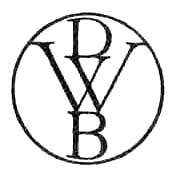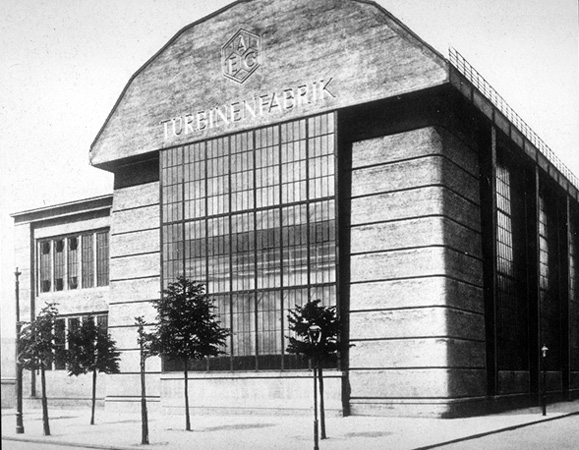 |
| The Association's Logo |
The phrase Deutscher Werkbund is German for "German Association of Workshops"
Once Art Nouveau had turned the design world on its head, everyone wanted the ornamental products, however they still had not figured out the problem to creating mass produced products with a high quality and good design, which meant that most objects were very expensive for the majority of the people, even with the rise of the middle class.
The English Arts and Crafts Movement served as a model for the German Workshops
In Germany, Jugendstil (a.k.a German Art Nouveau, name means young style) were becoming more and more cheaply made, except for where independent designers and industrial producers worked together hand-in-hand. However, the III. Deutsche Kunstgewerbeausstellung (3rd German Arts and Crafts Exhibition) in Dresden in 1906 made it obvious that the Jugendstil was no longer the primary style of the era, in Germany at least. A year later, The Deutscher Werkbund was formed following in the footsteps of the English Arts and Crafts movement.
The Association's aim was simple: to bridge the gap between good design and mass production. They started out with 24 members: 12 designers (including Peter Behrens, Josef Hoffmann, Josef Olbrich and Bruno Paul) and 12 established manufacturers and other design workshops such as the Wiener Werkstatte and the Vereinigte Werstatten fur Kunst im Handwerk (Untied Workshops for Art in Handiwork). Within a year this number had grown by more than 20 times over to 500 members.
 |
| Cover of Yearbook issued in 1912 |
From 1912, The association started producing what they called yearbooks, in which they published both designs by its members (such as factories and cars) as well as their addresses and area of specialization in an effort to promote cooperation between them.
 |
| AEG's Turbine Hell in Berlin-Maobit, designed by Peter Behrens, 1908 |
 |
| Poster for Deutscher Werkbund Exhibition in Cologne 1914, by Fritz Hellmut |
Between the members craftsmanship and industrial production kept fueling one debate. Standardization or individualism? This argument nearly split the association apart and it wasn't until after WWI (1914-1918) that Industrialization became a necessity as did standardization. By 1924, the Werkbund had started looking at eliminating ornamentation all together in favor of more functional designs as seen in their book "Form Ohne (without) Ornament"
The Werkbund was eventually disbanded in 1934 and although it reunited itself after WWII in 1947 and actually still exists to this day, it never regained its former glory, however, it was the movement that bridged together Jugendstil and The Modern Movement (a.k.a the Bauhaus) and without it we certainly would not have most of the designs which we have today.
REFERENCES:
Unknown, (1907), Deutscher Werkbund Logo [ONLINE]. Available at: http://tipografos.net/posters/dwb-logo.jpg [Accessed 08 November 13].
Unknown, (1912), Yearbook with emblem of Deutscher Werkbund [ONLINE]. Available at:http://catalog.quittenbaum.de/daten/M/BilderJPG/52100/52156.jpg [Accessed 08 November 13].
Peter Behrens, (1908), AEG turbine-hall [ONLINE]. Available at:http://www.arthistory.upenn.edu/spr01/282/w4c2i08.jpg [Accessed 08 November 13].
Fritz Hellmut, (1914), Poster for the Deutsche Werkbund Exhibition in Cologne [ONLINE]. Available at:http://www.fiellblog.com/storage/Deutscher%20Werkbund.jpg?__SQUARESPACE_CACHEVERSION=1311594642602 [Accessed 08 November 13].
Charlotte & Peter Fiell, 2012. Design of the 20th Century (25). Edition. Taschen.
Thomas Hauffe, 2001. Design: From the Industrial Revolution to the 21st Century (Flipguides). Edition. Dumont Monte.
2001. Design Classics (Architecture & Design) (English and French Edition). Bilingual Edition. Taschen.
No comments:
Post a Comment